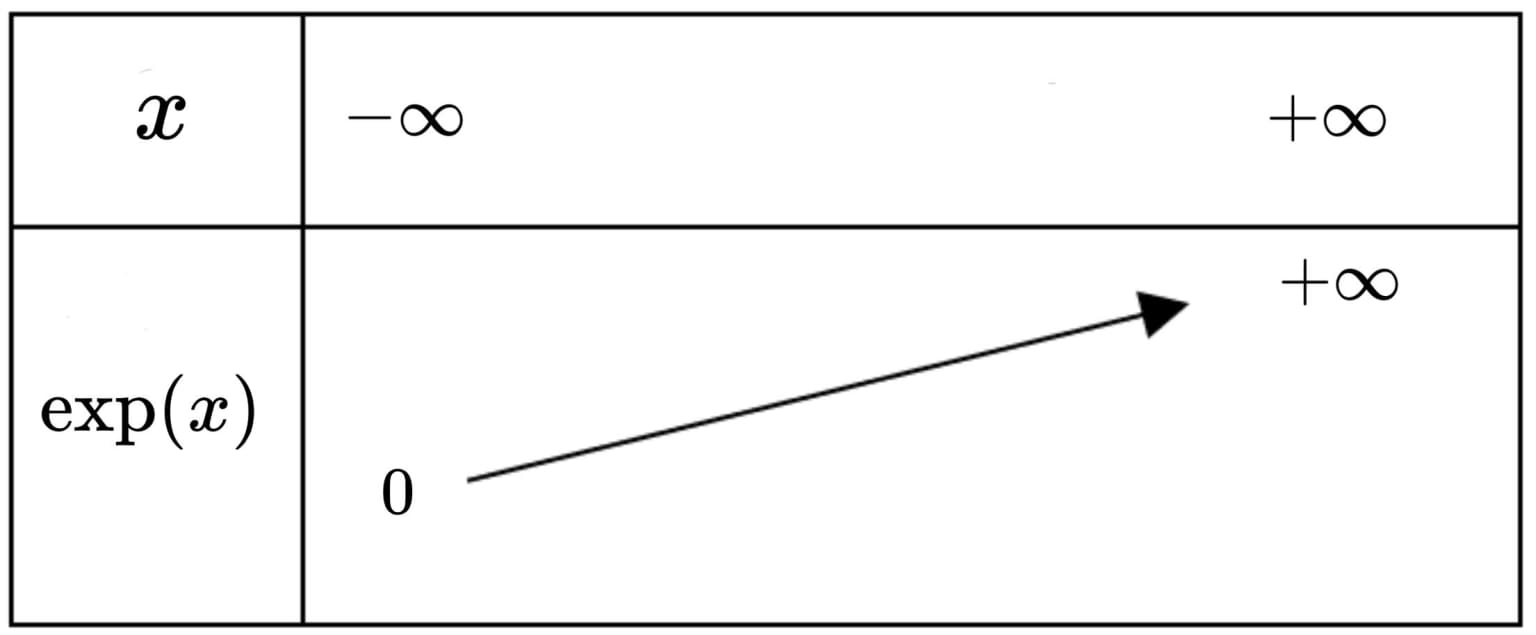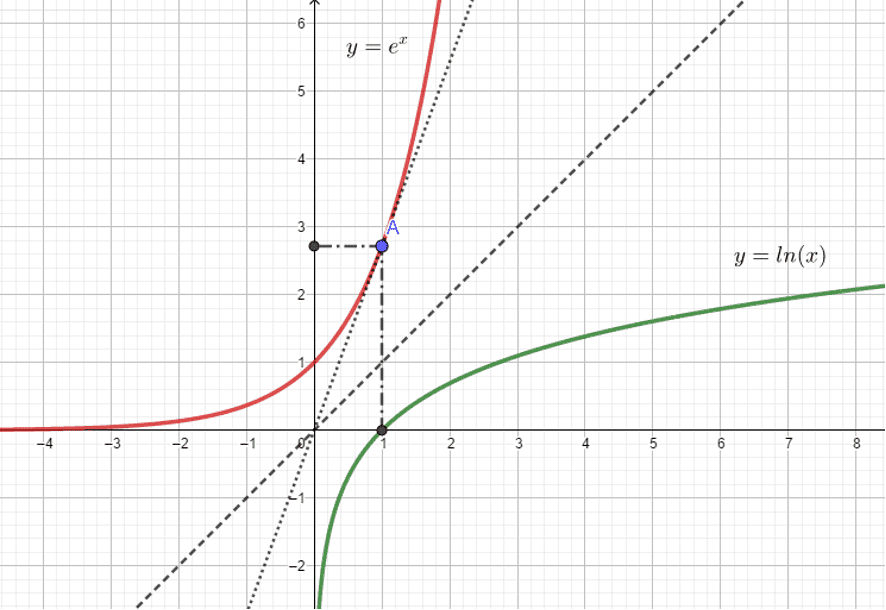Définitions et premières propriétés
C'est la bijection réciproque de la fonction $\ln$. Elle est définie sur $\mathbb{R}$ et a pour ensemble d'arrivée $]0~ ;+\infty[$. Notons-la provisoirement $\exp$.
Conséquences :
- Pour tout $x$ appartenant à $\mathbb{R}, \exp x>0$
- Pour tout $x$ appartenant à $\mathbb{R}$, $\ln (\exp x)=x$
- Pour tout $x$ appartenant à $]0~ ;+\infty[$, $\exp (\ln x)=x$
- $\forall(a, b) \in \mathbb{R}^2, \exp a=\exp b \Leftrightarrow a=b$
- $\exp 0=1$ et $\exp \mathrm{e}=1$ ($\rm e$ étant le réel tel que $\ln \mathrm{e}=1)$
- Pour tout $n \in \mathbb{Z}$, $\exp n=\mathrm{e}^n$
Nous admettrons que l'on peut prolonger cette dernière notation à tout réel en posant :
Pour tout $x$ appartenant à $\mathbb{R}$
$\exp x=\mathrm{e}^x$
En utilisant cette nouvelle notation, les propriétés suivantes s'écrivent :
Propriétés
- Pour tout $x$ appartenant à $\mathbb{R}$, $\mathrm{e}^x>0$
- Pour tout $x$ appartenant à $\mathbb{R}$, $\ln \left(\mathrm{e}^x\right)=x$
- Pour tout $x$ appartenant à $]0~ ;+\infty[$, $\mathrm{e}^{\ln x}=x$
- $\forall(a, b) \in \mathbb{R}^2$, $\mathrm{e}^a=\mathrm{e}^b \Leftrightarrow a=b$
- $\mathrm{e}^0=1$ et $\mathrm{e}^1=\mathrm{e}$
Propriétés algébriques
- $\forall(a, b) \in \mathbb{R}^2, \mathrm e^{a+b}=\mathrm e^a \times \mathrm e^b$
- $\forall a \in \mathbb{R}$, $\mathrm e^{2 a}=\left(\mathrm e^a\right)^2$ et plus généralement : $\forall a \in \mathbb{R}$, $\left(\mathrm e^a\right)^n=\mathrm e^{n a}$
- $\forall a \in \mathbb{R}$, $\mathrm e^{-a}=\dfrac{1}{\mathrm e^a}$
- $\forall(a, b) \in \mathbb{R}^2$, $\mathrm e^{a-b}=\dfrac{\mathrm e^a}{\mathrm e^b}$




